Antarctica#
by Stas Sedov, Mike Reyfman, Oleg Gaponyuk and Max Guzovskiy, members of the AirPano Team that is member of the global-geography Consortium.27 February 2015
with kind permission of AirPano
Our adventurous story is completely in the spirit of the AirPano team. This time, however, our success was very doubtful.
It is almost impossible to all of a sudden take off to go "shoot
Antarctic". The travels in this region are planned far in advance; there
is no such thing as a last minute decision. In our case, we made
reservations to participate in a photo tour of the Antarctic 2 years in
advance. Cancellations of the trip at any stage meant extreme financial
loss, which would multiply as we approach the beginning of the
expedition. Our drones were not yet ready to shoot in such challenging
conditions, but Oleg Gaponyuk, the founder of the project, was convinced
that within a couple of years we would be able to solve any technical
problem, and firmly put down a deposit. (Oleg's comment: "my hand was
shaking as I was making the deposit!" ![]()
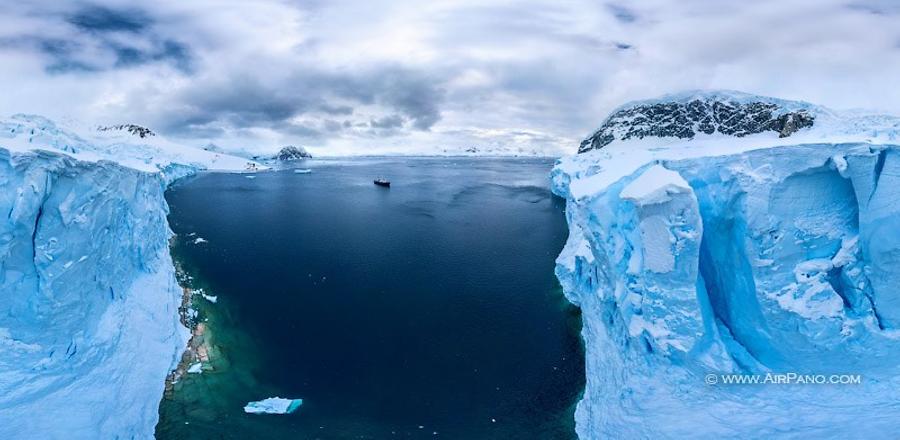
© AirPano
By the summer of 2014, the team had acquired the necessary equipment and experience for aerial photo shooting in a variety of conditions and countries. We decided a test was needed before the Antarctic expedition to perform work in similar conditions and went to icy Greenland. Unfortunately, that shooting was not successful, and four months before traveling to the Antarctic we had to start almost from scratch.
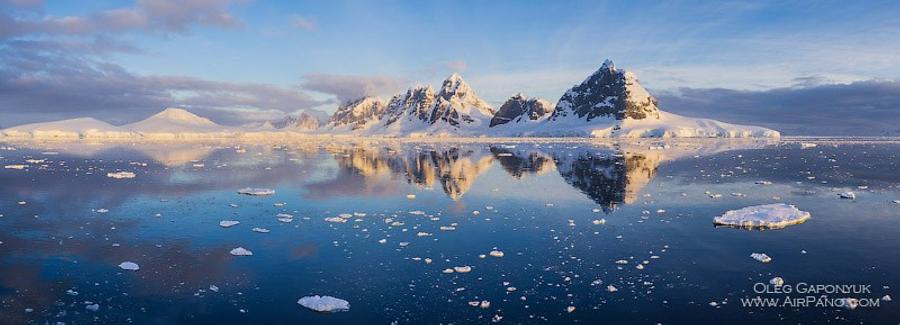
© AirPano
We chose a new drone design, changed the power scheme, and developed and tested the new mounting system for cameras and camcorders. The size and weight of the new device was somewhat intimidating, but the flight characteristics — flight duration and load capacity — were considerably better than its predecessor.
The expedition started from the city of Ushuaia, Argentine. All the participants had to make their own travel arrangements. From Moscow we flew more than a day with two connecting flights in Barcelona then Buenos Aires. On this long and difficult journey any small problem can ruin the entire trip, and if there is the slightest chance of "failure," rest assured, it will happen! Early morning in Buenos Aires, I found out that almost all our equipment was still in Barcelona. Also, deliveries to Argentina would be delayedbecause flights were scheduled every other day.
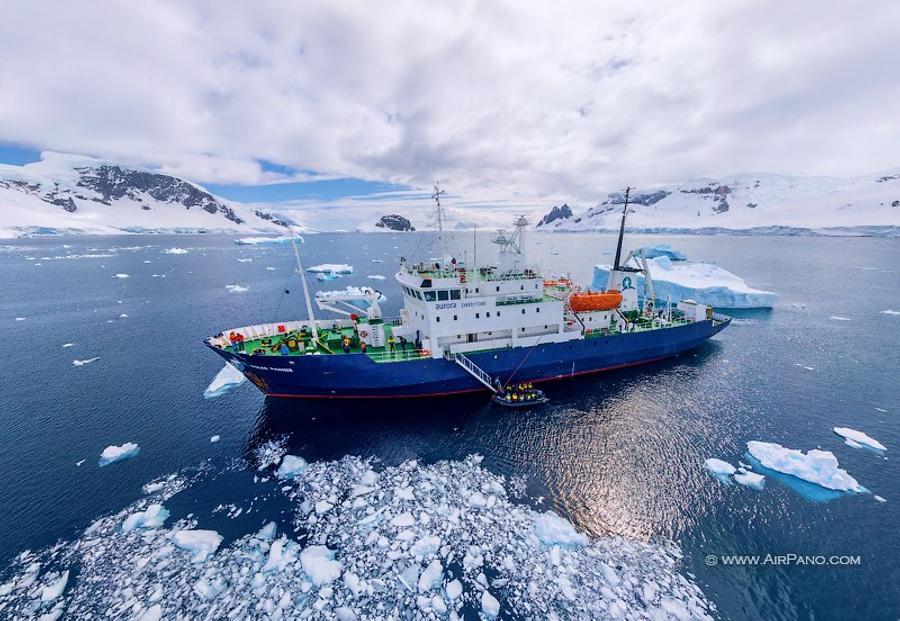
© AirPano
We fly often enough to be ready for such mishaps. I left for Ushuaia two days earlier than the rest of the photo tour team. We agreed to shoot several key locations in Buenos Aires and look for the missing baggage when we were changing planes, just in case it gets lost in Spain. It took two days for the Argentine airlines to find our missing suitcases, but by the time of departure to Ushuaia, we were fully prepared for our expedition.
On the morning of November 22nd, our team boarded the ship called Polar Pioneer. I received permission from the captain for the first drone flight, and so we made our first aerial footage of the expedition: our ship before departing to the shores of the Antarctic.
A few words about the ship and its crew. Polar Pioneer is a Russian vessel, converted from a scientific research ship into a small cruise liner, adapted to travel to the Arctic and Antarctic. The ship is operated by the Australian company Aurora Expedition, but most of the crew, including the officers, are Russians. I believe this fact contributed greatly to the success of shooting onboard the vessel. Almost immediately we were allowed to use the deck as a takeoff platform for the drone. In addition, the photographers were allowed to use a walking bridge — the control center of all systems aboard the ship. This access was allowed at any time, day or night.
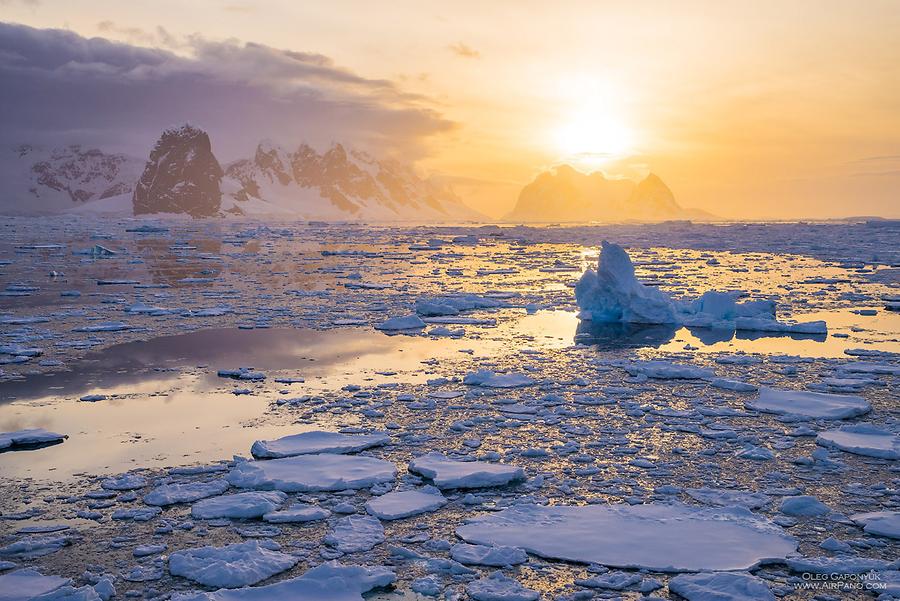
© AirPano
After leaving the port of Ushuaia, we went through the Beagle Channel for several hours. It is a relatively quiet portion of the journey, followed by "the Drake". This is how the crew refers to the crossing of the Drake Passage from Argentina to the Antarctic and back. The ocean in this part of the world is never calm. Even when the ship sails on so-called "flat seas", i.e., relatively calm sea, the waves still reach a couple meters in height.
According to our crew, they make this crossing once a week on average carrying tourists, shipments of supplies, and scientists that travel to Antarctic stations. All recall one previous voyage very well. The ship was beaten so badly in the passage that even veterans, such as our captain, who had made this crossing more than 100 times during his career, could not remember it being this treacherous.
Our ship can withstand rolls of more than 60 degrees; during this storm the ship's inclinometer showed 50. Some cabins had not only personal belongings flying over the ceiling, but also furniture, tables and chairs. The crew tried to mentally prepare us for the worst, but we were lucky. While crossing the passage towards Antarctic we had a small storm — only 28-30 knots. At the very beginning of the storm, Oleg and I went out to the brow of the ship shooting a 360-video for a short while. Later, the captain ordered us to close all the hatches and deck access until the storm subsided.
We were told that the storm was nothing out of the ordinary, although many passengers suffered from common seasickness.
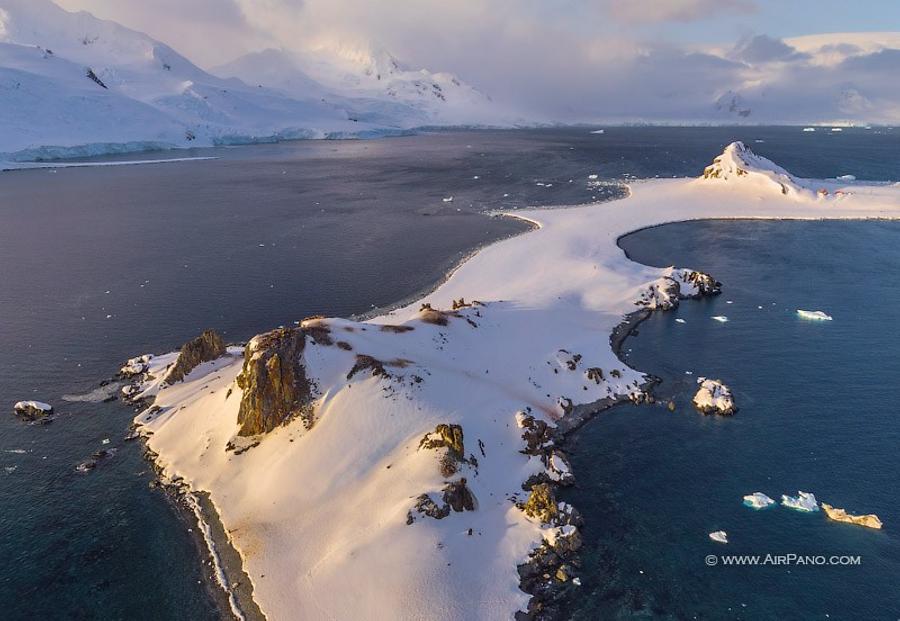
© AirPano
A few words about our photo expedition. The organizers of our cruise were Norwegian photographers from WildPhoto Travel team. They brought together on-ship enthusiasts and professionals of animalistic and landscape photography. For the first time in their cruise experience they managed to organize a strictly photographic tour to the Antarctic.
Thanks to the selection of the participants, the daily routine on the ship during the cruise in the Antarctic waters had been specifically designed to achieve our photographic goals: if possible we put ashore up to three times a day, and the landing was timed to the sunsets and sunrises, the right time for photography, which would not be possible on the usual tourist cruises.
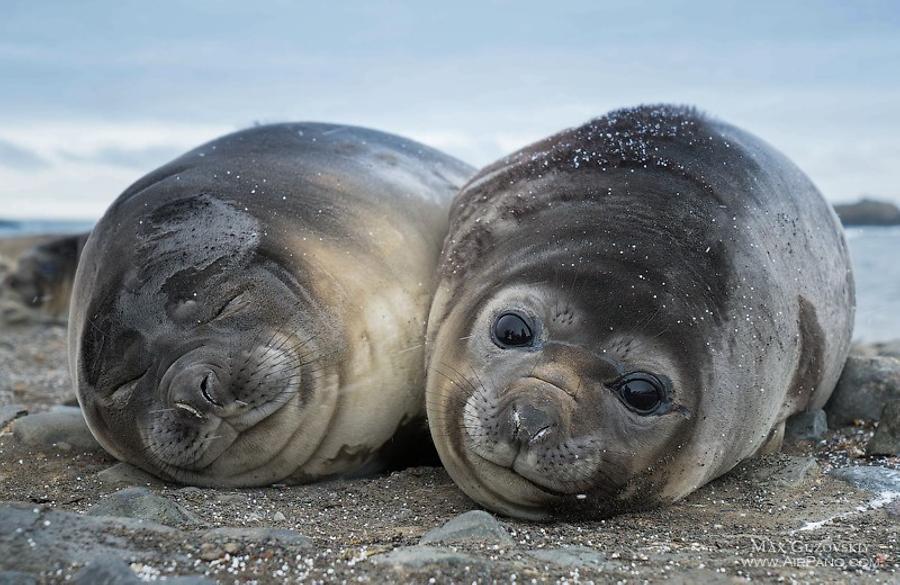
© AirPano
It should be mentioned that the work in the Antarctic was different from our usual photo-shooting because of the large number of restrictions and regulations designed to protect the inhabitants of the ice region from human activities. For example, there are regulations, such as the vacuum cleaning of personal belongings and equipment and treatment of shoes with a special solution each time we leave the ship and return back; and restrictions: it is prohibited to take food on shore! You are not allowed to approach animals! You cannot get too close to the glacier! The penguins cannot be touched! You cannot shove your camera in a bird's beak! It would be easier, perhaps, to list what you can do: observe and shoot. Our guides watched vigilantly for rule violations, threatening to ban photographers from going ashore — the most stringent of the possible penalties for a photographer on board. This can be explained by the fact that the guides are responsible for their licenses in the event of any serious incidents on shore.
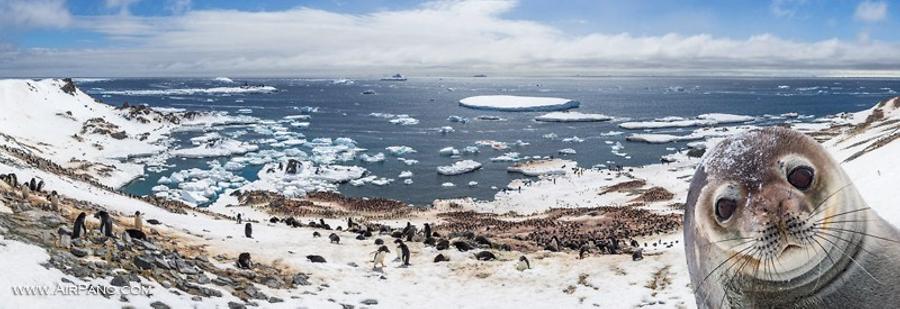
© AirPano
AirPano is joking
A couple of words about the weather in the Antarctic. We arrived in the Antarctic waters in early spring; the first island appeared on the evening of November 24th. The first boat cruise among the glaciers took place on the morning of November 25th. It was not very cold. On almost all the days that we spent in the Antarctic, the temperature hovered around 0 degrees Celsius. However, the local spring weather is tricky not because of the low temperatures, but more because of its variability and frequent strong winds. For instance, the sun was just shining, when suddenly out of nowhere the snow came, and visibility and temperature instantly fell, making it very uncomfortable to stay outside the warm cabin. However, in half an hour the sun comes out and shines again. It is practically impossible to predict all these weather and wind shifts. Our guides advised us to dress how it feels and always add "one more layer", telling us that one day, instead of the planned two-hour drop-off, they had to spend almost the whole day on the shore because of the bad weather. It gives you an idea of the conditions in which we were going to do our aerial photo-shooting.

© AirPano
The most serious risk that we had to encounter almost every day was not the low temperature but the strong gusty winds constantly changing directions. During the standard take-off from the ship (although I have to mention there are no standard take offs!), the anemometer showed the wind at 7-9 m/s, and the deck was shaking. The Polar Pioneer, though anchored, constantly changed its position. The wind always blows from the bow of the ship. While I was getting ready to start the drone, we were protected by the ship board from the wind. However, every time the drone took off, the wind immediately blew it off behind the mast located behind me.

© AirPano
Photographing penguins is not as easy of a task as it might first seem. Our guides advised that the best shots you can get of these birds are from the bottom up. To create the masterpiece photo, one needs to either lie on the snow and wait for the birds to come to you or try to slowly crawl up to the colony without scaring the birds. Everything seems simple, but you have to crawl on a smelly, creepy substance. Penguins make their toilet not so far away from the nest. Oleg had a certain advantage over others: his Sony camera had a folding screen that allowed him to see the subject without diving into the excrement head first.
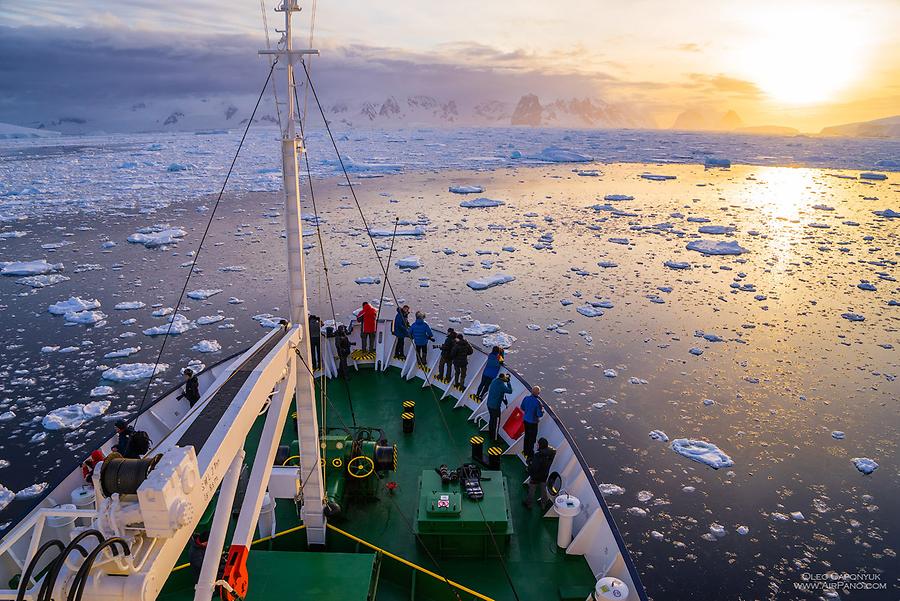
© AirPano
One can observe the life of penguin colonies for hours. Here's a workaholic penguin dragging a new stone from the shore to his nest. If he snoozes, the sly neighbor will get his stone. Sometimes a stone may change more than a dozen owners before it finally gets laid in the nest wall. These manipulations of stones cause penguins constantly to break out into verbal skirmishes, sometimes turning into quite a noisy fight.
We quickly stopped shooting separate groups of penguins with the drone — it was not the most interesting subject for aerial photography. However, it would be great to show the colony inside out. It is forbidden to go inside the colonies to set the camera up on a tripod, and at the same time, large groups of birds do not step away from the colony very often. What can be done?

© AirPano
We had a special telescopic pole in our equipment that is usually used for shooting land-based spherical panoramas. One day, when I was wandering around the Gentoo colony, I came up with an idea to leave the pole with a camera near a group of penguins. I don't know what worked more — my caution or the natural curiosity of these funny birds. But, it worked 100%. In such a simple way I managed not only to shoot a large number of spherical panoramas of the penguins but also a 360-video.
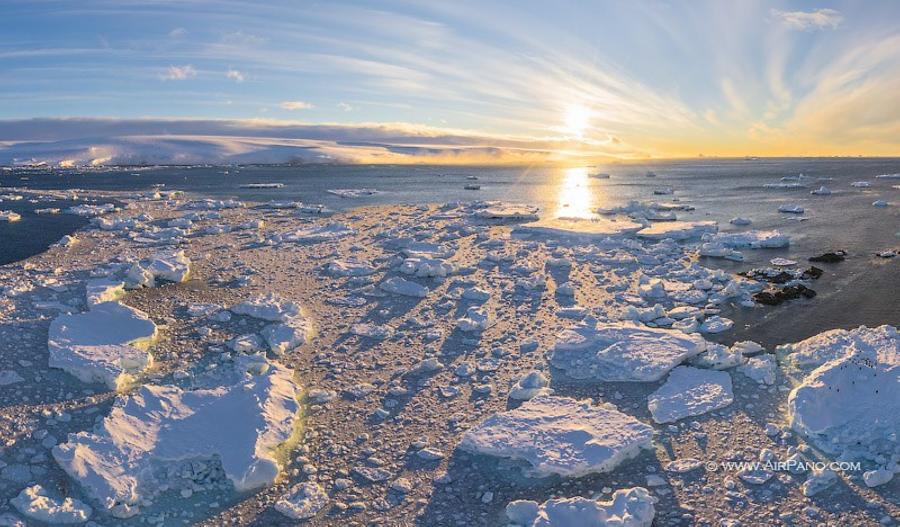
© AirPano
Now about the penguins. I have to mention that one of the main enemies of these birds is the leopard seal, which was constantly chased by our team of photographers-animalists. We often came across leopard seals near major penguin colonies. They curiously stared out of the water at our boats, sometimes literally shuffling their snouts for a second above the surface of the sea, causing a complete shock within the next group of penguins, who at any moment were ready to jump into the water.

© AirPano
Judging by the enthusiasm with which our guides turned the boats to join the group that just spotted a leopard seal — we knew, this could be a very valuable photo-trophy. Finally we got lucky: one of the boats encountered a predator that rested after a meal, in the lagoon of Astrolabe Island. After a radio announcement,in a matter of moments all boats gathered around the ice floe with the leopard seal. The predator courageously bore 5 minutes of cameras' shutters, and then he dipped his long snake-like neck to the water and dove in silently. Everybody relaxed, discussing the just-taken photographs, while the hero of our photo shoot suddenly popped up right by one of the boats. It seemed he wanted to ask: "Why did you make me leave my comfortable bed?" "Sorry, buddy!"— I thought, reaching for the camera, but the dark shadow under the water was already leaving and soon disappeared from the view.
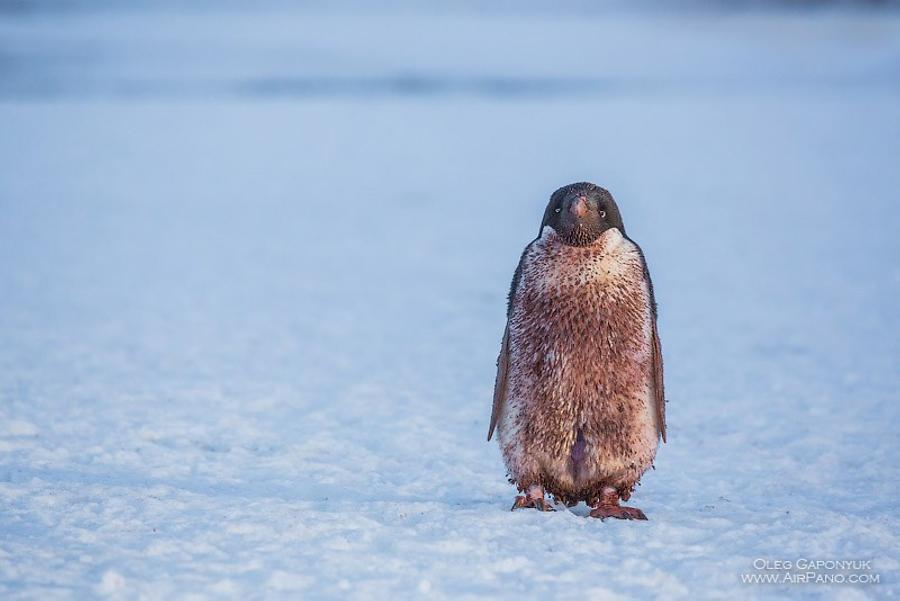
© AirPano
It's also worth telling about our visit to the rookery of elephant seals. We were not allowed to make aerial photographs of this location, so I only carried my cameras and a pole ashore. Due to the weather conditions, the journey from the ship to the beach reminded me of an American "roller coaster" ride. We were bobbing up and down on huge waves that constantly pounded the tiny zodiac, and the icy cold water covered each photographer from head to toe. It was an unforgettable, chilling experience!
The shore is an infinitely long gravel strip with lots of rookeries of elephant seals. People instantly split up in search of the best shots, though, as an afterthought, I remembered that the guides had advised us not to wander along the shore and stand still in one place. Unfortunately, this advice was ignored by almost all the photographers. According to the rules, you can't approach the sea life closer than 15 meters. However, these rules do not apply to the animals approaching you. Our experienced crew members — the ship's Medic and Cook — took advantage of this loophole. The ladies simply layed down near the landing area and began to wait. In about 30 minutes a young elephant seal showed up joyfully panting and rubbing his head against the cook's overalls.
Perhaps it was the delicious smell of the ship's kitchen, or maybe the elephant seal was just simply in a good mood, but he performed a funny pantomime, and within minutes he became the hero of the day, gathering around him a large part of our group. It was a revelation to me that these animals could have such rich facial expressions.
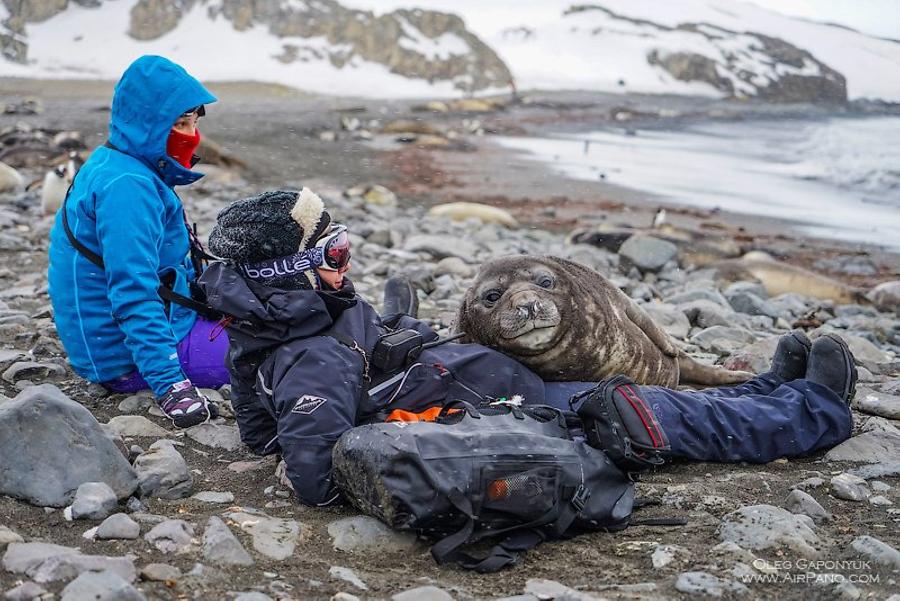
© AirPano
Once I decided to take a video with a very big roaring elephant seal. Whule I was looking for the best position I didn't notice anything around me. When I pushed the record button on the camera, something pulled my leg and growled. At that moment I thought an elephant seal had snuck up behind me for an attack, and I could kiss my leg goodbye. I prepared to fight for my life and turned around, when I saw Mike Reyfman chuckling behind me (well known to visitors of our site for his fantastic panoramas of Bryce Canyon and many other photos). Only my deep respect for Mike's talents and experience saved him from a quick and bloody execution for such a joke.
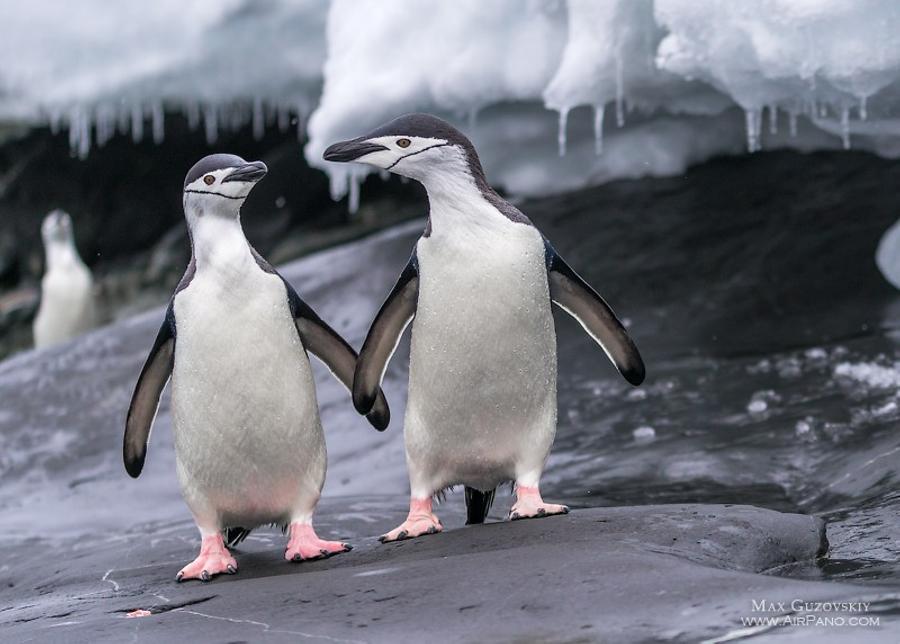
© AirPano
The story of the Antarctic would be incomplete without a description of the icebergs in a wide variety of shapes, colors and sizes. After breaking away from the glacier, these huge mountains of ice slowly drift along the straits between the islands. Water slowly erodes the underwater portion of the iceberg, which then loses its stability and flips, displaying arches, caves and bridges that were once underwater and now in the sun are strikingly beautiful with their surreal shapes and sizes.
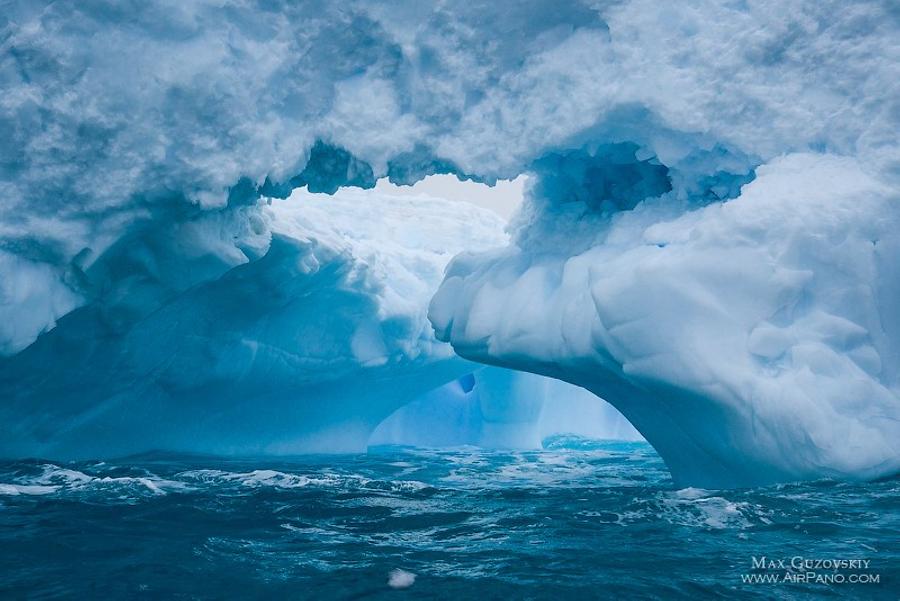
© AirPano
We've filmed a lot of icebergs from the zodiacs and the coast, but most of all I remember the shooting from the deck of the Polar Pioneer. She's an ice-class vessel, not an icebreaker, but she sailed quite effortlessly through small fields of ice. Only once, at the end of the expedition, did we experience trouble on the Weddell Sea. Realizing that we wouldn't be able to break through, the leader of the expedition gave the order to turn back, which began the discussion about problems sailing in local waters. According to our captain, it's easier for a vessel to get stuck in the ice than to break out of it later. That is the reason why he always makes sure to leave room for maneuvering. I asked how dangerous these huge icebergs would be for us as we were just passing by an impressive-sized mountain of ice slowly drifting along the passage. I was reassured and calmed down, and then I was told how the ship's radar monitors ice conditions for several miles around.
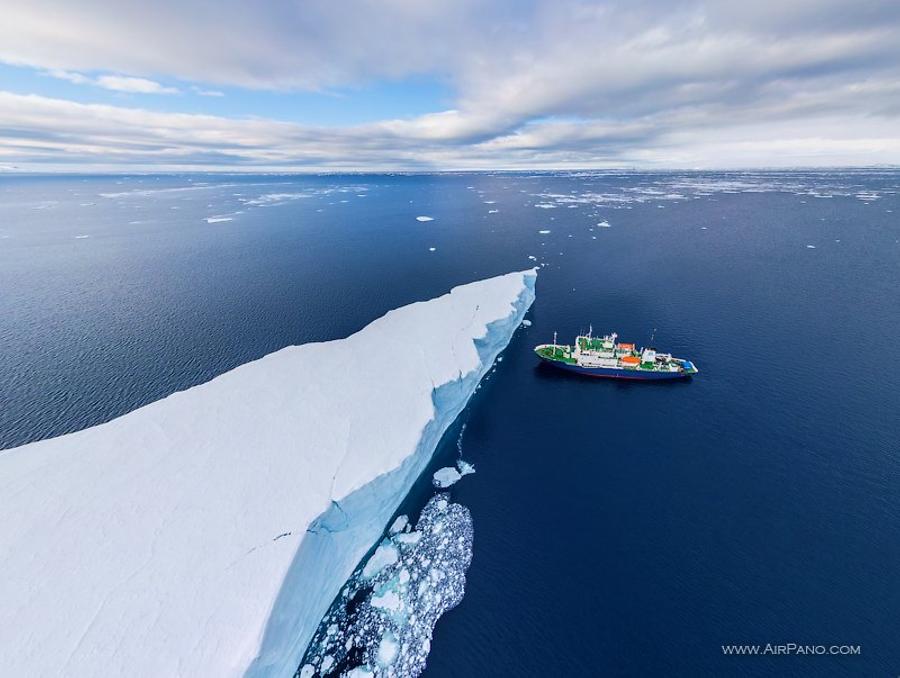
© AirPano
Unfortunately, all good things must come to an end, and so we spent our last day in the Antarctic on Half Moon Island. Looking at aerial photographs taken from the drone, we realized that the island's crescent shape justifies its name sake. The Argentine station Camara, founded in 1953, is the only building on the island. It's open only in the summer, and at the time of our visit the island was closed. We, after receiving prior approval from the leader of the expedition, were able to make several loops around Camara station for photo shooting and videos.
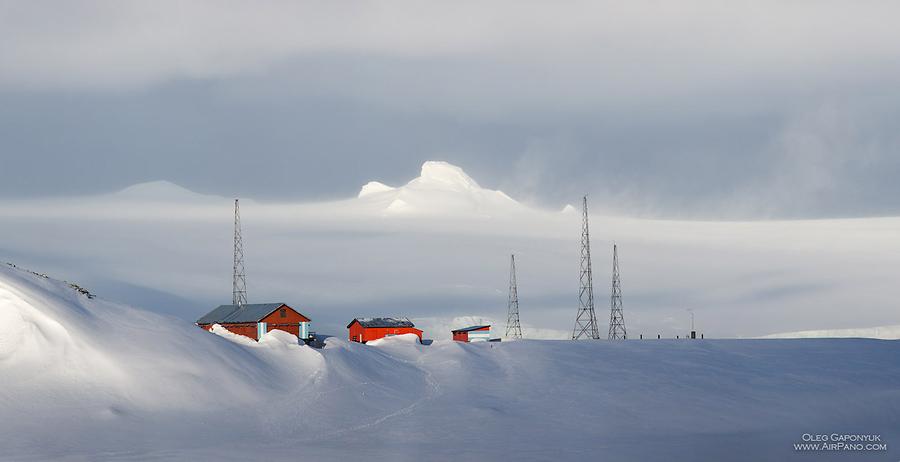
© AirPano
We experienced some adventures here as well. According to our plan, Oleg and I were to shoot this lifeless island with its abandoned station. There was no one around us as we were preparing our drone to take off, but then as we started, our colleague-photographers appeared next to the buildings, like little devils out of snuff-boxes. For this reason we had to stay a little longer, shooting additional doubles, and we almost missed our departure deadline to the zodiacs. It wouldn't be much fun getting stuck ashore, waiting for another ship to arrive!
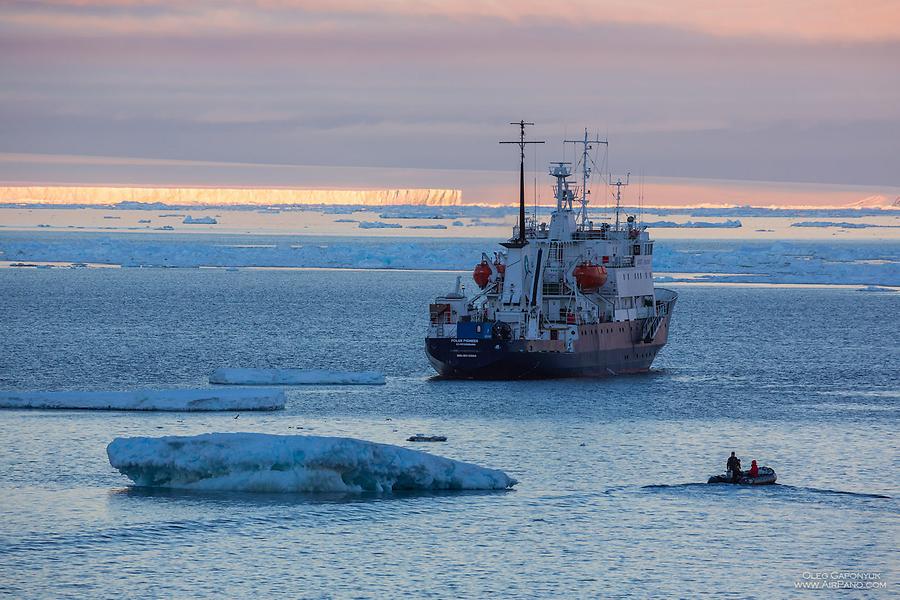
© AirPano
The Drake Passage towards Ushuaia was remarkably quiet. Almost the whole voyage was spent on a flat sea, which, according to the captain, happens only two or three times during his rich experience in this region. At the end of our journey, the crew and guides prepared a pleasant surprise for all participants: the leader of the expedition and a photographer from Spain, who acted as his interpreter, had contacted the Chilean border patrol in advance and received permission to enter the 12-mile zone near Cape Horn, where foreign vessels have no access. So, totally unplanned, we saw the legendary place — the south end of South America.
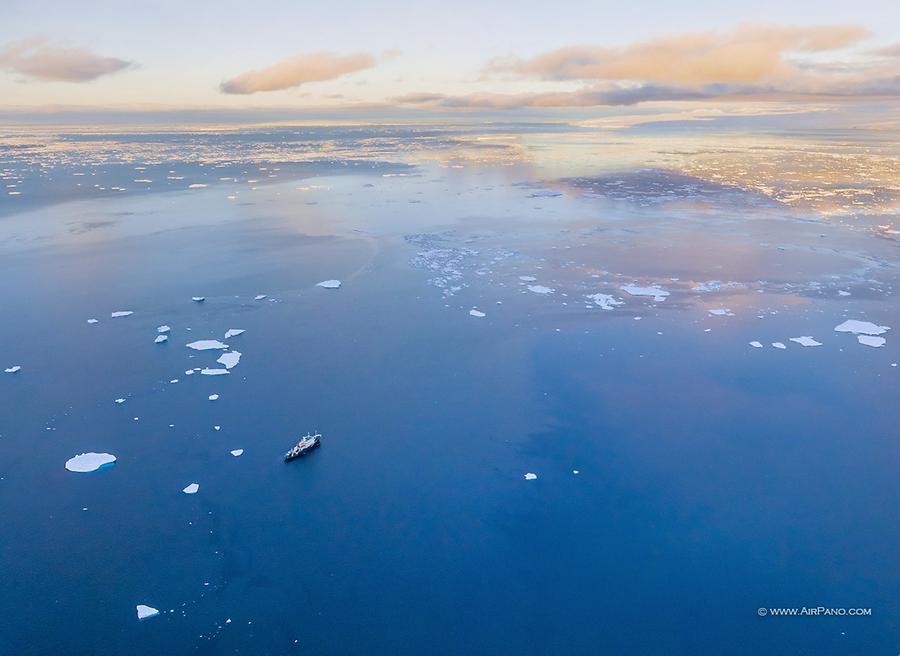
© AirPano
Our final night aboard ship was passed under the clinking of glasses, the viewing of our best shots, and the playing of a guitar that was unexpectedly found on the ship. On the early morning of December 6th Polar Pioneer returned to the port of Ushuaia to say goodbye to our group and welcome a new one for the next exciting Antarctic expedition.
It was time to say farewell to our new friends from our trip. Ahead of me lay the shooting of Buenos Aires, but that is another time and another story...
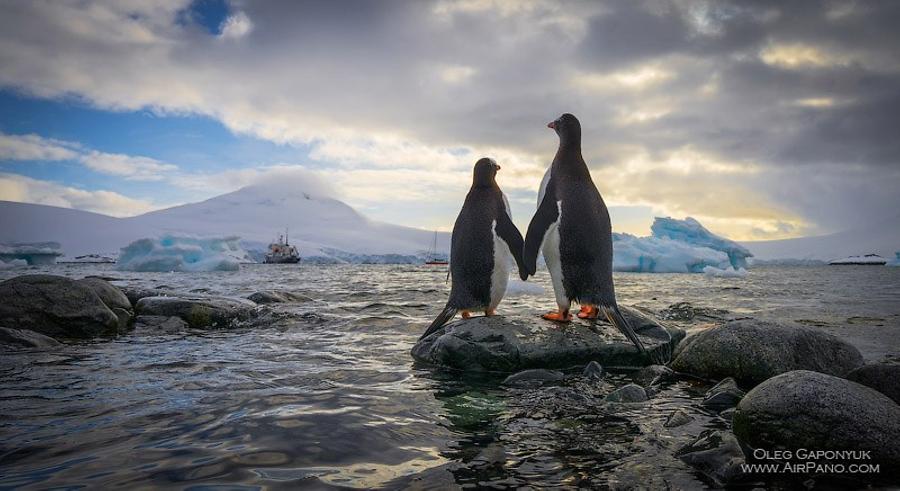
© AirPano
24 Panoramas of Antarctic expedition 1
and 22 Panoramas of Antarctic expedition 2